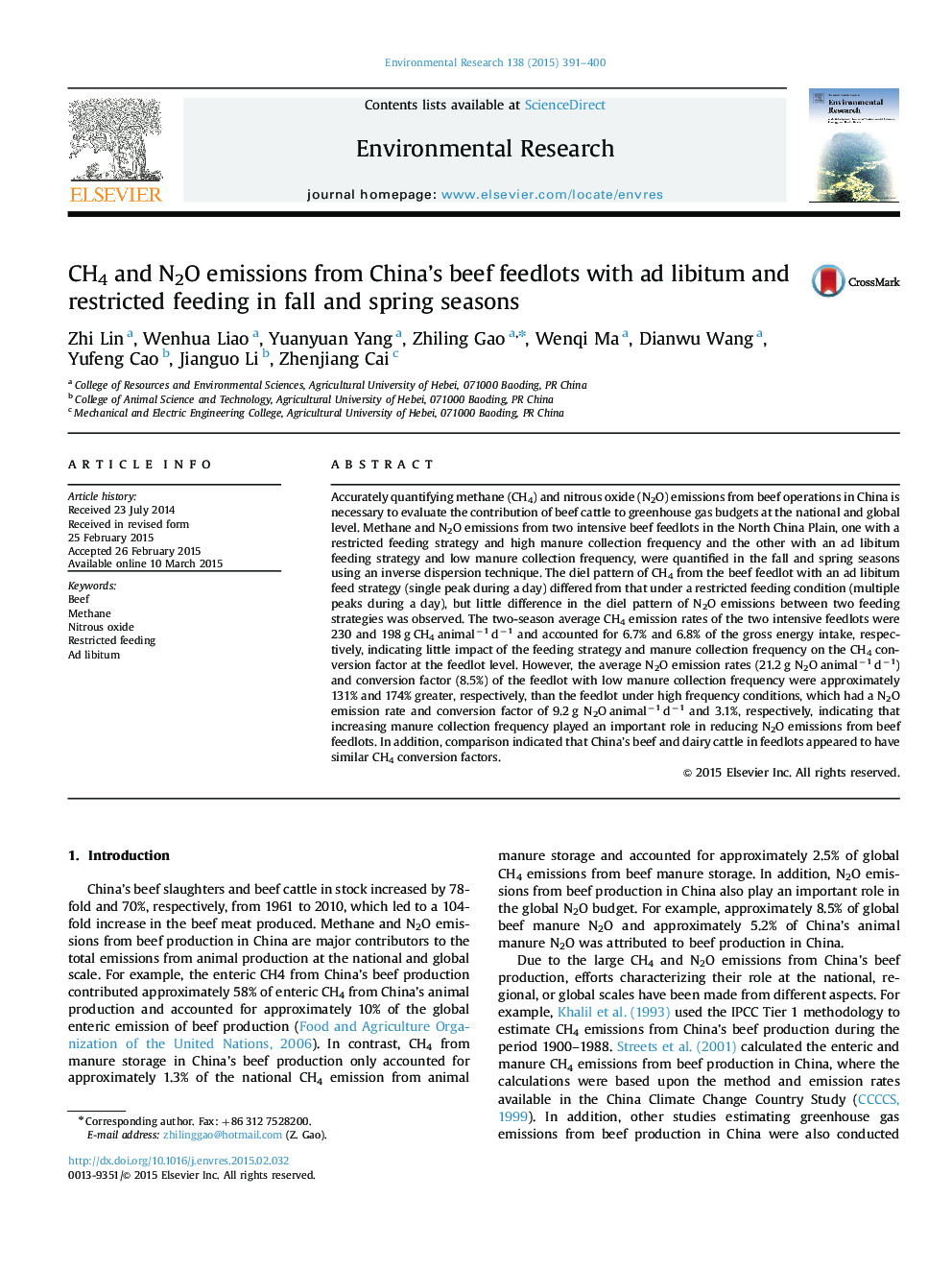| کد مقاله | کد نشریه | سال انتشار | مقاله انگلیسی | نسخه تمام متن |
|---|---|---|---|---|
| 4469789 | 1622563 | 2015 | 10 صفحه PDF | دانلود رایگان |

• CH4 and N2O emissions from China’s beef feedlots were provided in the first time.
• Feeding strategies determined the diurnal pattern of feedlot CH4 emission.
• Frequency of manure collection played an important role in N2O from feedlots.
Accurately quantifying methane (CH4) and nitrous oxide (N2O) emissions from beef operations in China is necessary to evaluate the contribution of beef cattle to greenhouse gas budgets at the national and global level. Methane and N2O emissions from two intensive beef feedlots in the North China Plain, one with a restricted feeding strategy and high manure collection frequency and the other with an ad libitum feeding strategy and low manure collection frequency, were quantified in the fall and spring seasons using an inverse dispersion technique. The diel pattern of CH4 from the beef feedlot with an ad libitum feed strategy (single peak during a day) differed from that under a restricted feeding condition (multiple peaks during a day), but little difference in the diel pattern of N2O emissions between two feeding strategies was observed. The two-season average CH4 emission rates of the two intensive feedlots were 230 and 198 g CH4 animal−1 d−1 and accounted for 6.7% and 6.8% of the gross energy intake, respectively, indicating little impact of the feeding strategy and manure collection frequency on the CH4 conversion factor at the feedlot level. However, the average N2O emission rates (21.2 g N2O animal−1 d−1) and conversion factor (8.5%) of the feedlot with low manure collection frequency were approximately 131% and 174% greater, respectively, than the feedlot under high frequency conditions, which had a N2O emission rate and conversion factor of 9.2 g N2O animal−1 d−1 and 3.1%, respectively, indicating that increasing manure collection frequency played an important role in reducing N2O emissions from beef feedlots. In addition, comparison indicated that China’s beef and dairy cattle in feedlots appeared to have similar CH4 conversion factors.
Journal: Environmental Research - Volume 138, April 2015, Pages 391–400